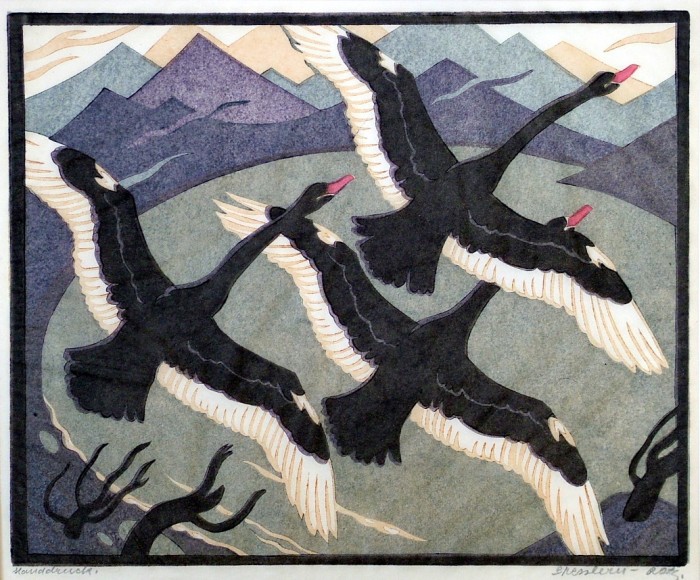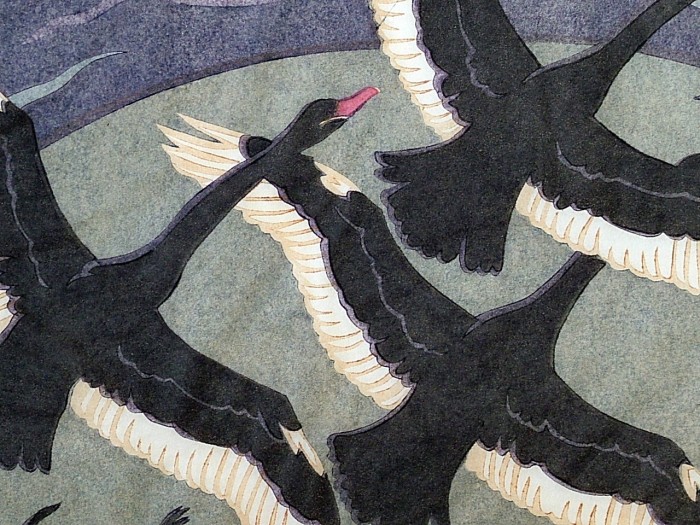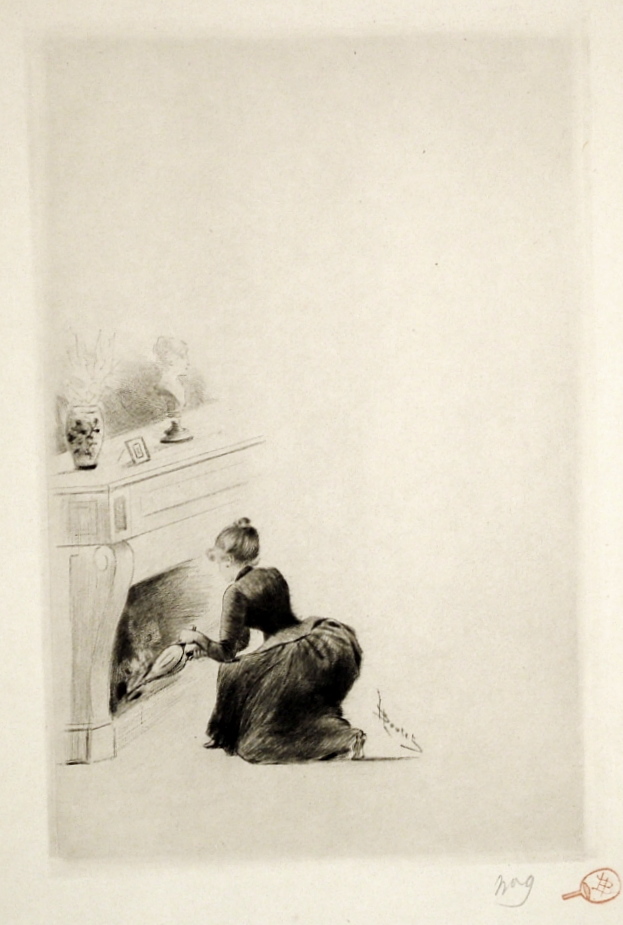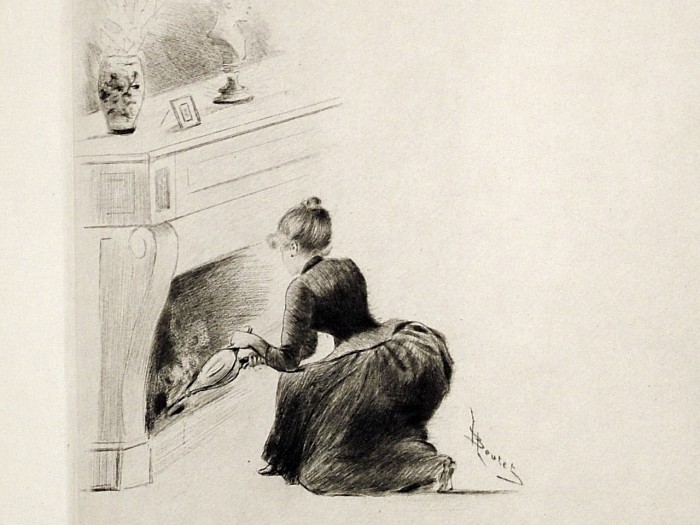Geese
Monday, April 11th, 2011
Norbertine Bresslern-Roth (1891-1978), [Geese], c. 1928, color linocut, signed in pencil lower right, annotated “handruck” (hand printed) in pencil lower left. In very good condition, with margins, printed in colors on a thin hand made Japan cream laid paper, 8 1/4 x 10 1/8, the sheet 10 1/8 x 11 5/8 inches.
Provenance: Estate of Sylvan Cole
A fine fresh impression of this rarely encountered linocut, printed from successive blocks
Norbertine Bresslern-Roth was an animal and portrait miniature painter as well as a graphic designer. From 1901 to 1910 she studied under Alfred Schrötter at the School of Arts in Graz. She continued her studies from 1911 to 1916 at the Vienna Academy of Fine Arts under Ferdinand Schmutzer. The artist then attended Hans Hajek’s school for animal painting.
In 1916 Bresslern-Roth returned to Graz where she worked mainly as an animal painter: along with Carl Fahringer and Heinrich Ludwig Jungnickel she is one of the most important Austrian animal painters. Brangwyn even pronounced her the greatest animal painter of her time.
In 1928 Bresslern-Roth went on a study trip to North Africa, which, in addition to her studies at various zoological gardens, had a great impact on her extremely varied works. Apart from her dramatic animal paintings she also painted decorative, stylised figure compositions such as “Dancing Women” or “Bird Hunter”. Bresslern-Roth became famous for her colourful linocuts and gobelin designs. (Bio taken from artistarchive.com)



